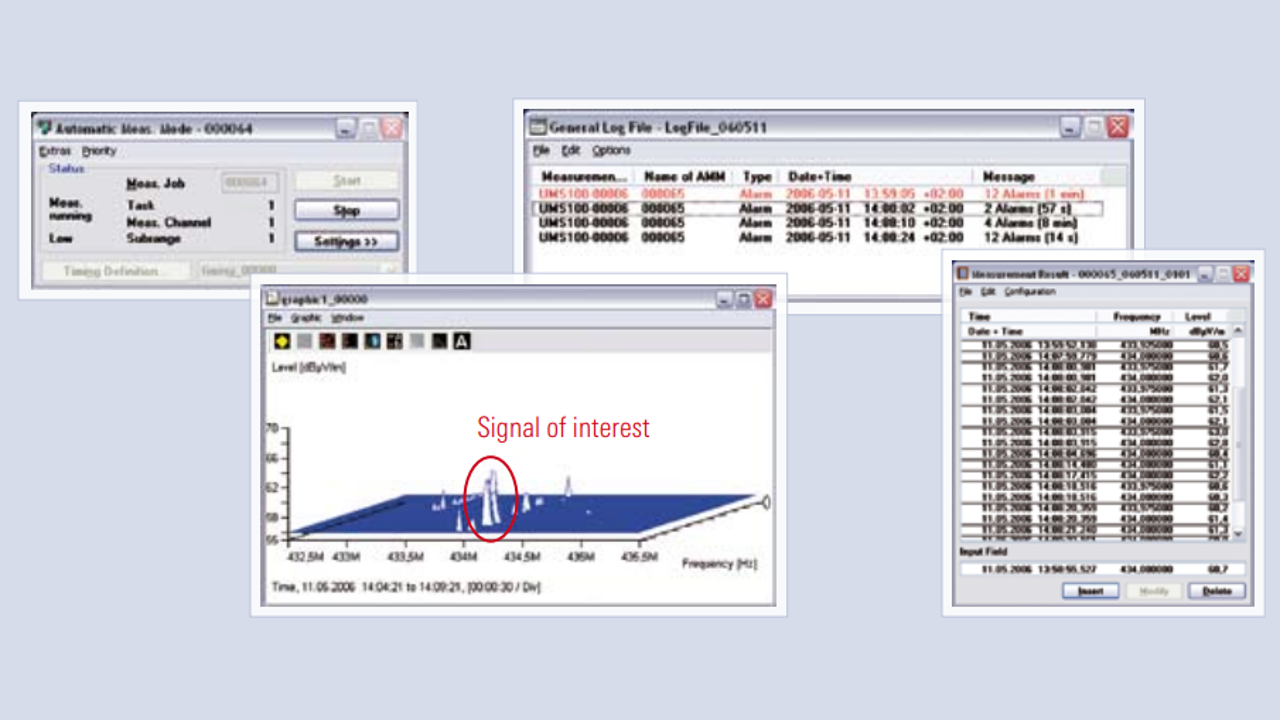Regulators in all countries are responsible for continuously monitoring the correct use of allocated frequencies and the emission parameters of registered (broadcasting) transmitters. Also, any illegal use of additional frequencies must be detected.
The task is to automatically monitor the frequencies in question, quickly detect noncompliant operation, serious problems and misuse of frequencies and forward an alarm to a monitoring control center (MCC), where operators can decide what further steps to take. The monitoring units used must meet several requirements:
- Wide frequency range
- Fast and simple installation
- Small outdoor units that do not require a special room
- Different types and ranges of power supply (AC/DC)
- Easy network integration (wireless, phone lines, etc)
- Automatic operation and alarm signaling
- Cost effective
Monitoring solution
The compact ¸UMS100 outdoor monitoring system is the optimal solution for automatically monitoring all frequency ranges and all transmitters of interest if it is placed within the coverage area. The topography and topology of the area to be monitored and the operating RF power of the devices whose signals are to be received determine the number of ¸UMS100 systems necessary and where they need to be located.
All ¸UMS100 systems are remote-controlled and administered from an MCC. The ¸UMS100 can be linked to the MCC via a LAN/WAN or via a wireless connection using mobile phone data services based on standards such as GSM or CDMA.
In the automatic mode, the ¸UMS100 immediately compares the live measurements with user-defined reference spectra. If one of the alarm criteria is met, an alarm message is automatically generated and forwarded to the MCC. Furthermore, audio recording can be initiated.
Application
The MCC runs the powerful ¸ARGUS platform to provide easy access to all ¸UMS100 systems. Besides direct interactive access, the preferred mode of operation is automatic measurements. Once a measurement is defined, it will run automatically on the internal processor of the ¸UMS100, either continuously or within selected timeslots, without requiring any further action on the part of the operator or a network connection. Thus, operating costs will be clearly reduced. Measurement results can be saved and displayed as tables and graphics. All alarm messages created by the ¸UMS100 are listed in the general log file in the MCC, as shown below (unprocessed entries marked in red).
Depending on operational preferences, the MCC can either routinely poll the ¸UMS100 to request measurement results or wait for alarm messages automatically generated and forwarded by the ¸UMS100 after a suspicious signal has been detected.
Upon receiving an alarm, the operator in the MCC must decide what further steps need to be taken:
- Use the ¸UMS100 to listen to the demodulated audio frequency
- Perform dedicated measurements on the signal that triggered the alarm
- Send special monitoring vehicles to the area of interest
The ¸UMS100 has been designed as a very costefficient,compact, robust, standalone monitoring system. It reliably detects signals with a minimum duration of typically one to two seconds.


Automatic monitoring of emission parameters of registered broadcasting transmitters


